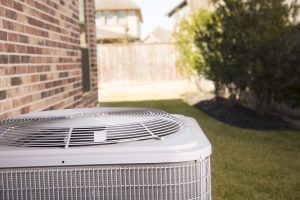 A piece of machinery that’s covered with a layer of grime and dirt won’t run as well as when it’s clean. That’s just a basic fact. When it comes to your air conditioning system, a layer of dirt and grime almost anywhere on it is bad news. For example, dust along the indoor evaporator coils can quickly cause the AC to lose energy efficiency and ice to develop along the coils.
A piece of machinery that’s covered with a layer of grime and dirt won’t run as well as when it’s clean. That’s just a basic fact. When it comes to your air conditioning system, a layer of dirt and grime almost anywhere on it is bad news. For example, dust along the indoor evaporator coils can quickly cause the AC to lose energy efficiency and ice to develop along the coils.
But you may not have considered dirt and debris on or around the outdoor cabinet (the condenser) as a problem. The condenser is located in a place on your property where it doesn’t attract much attention, since it’s not the most attractive piece of machinery. Many condensers are placed behind fences or barriers for this reason. And because the condenser is outdoors, it’s easy to think that it’s impervious to elements, and if it gets dirty or leaves or branches grow close to it, it’s not that big a deal.
But a dirty or obstructed condenser cabinet is a problem. If you’ve noticed trouble with your AC at this late part of the season and don’t know why, check the condenser. If it’s covered in dirt or obstructed in some way, this may be why you’re having AC issues.
The Condenser Cabinet Needs to Be Able to Draw in and Exhaust Air
A quick reminder about what the condenser does: it houses the compressor as well as the condenser coil and blower fan. The fan draws air from outside the compressor through grills and passes it over the refrigerant coils. The hot refrigerant gas condenses and loses its heat to the air, and the blower fan exhausts this air through the top of the unit. This is how the AC releases heat from the house and cools down the refrigerant before sending it indoors. If the condenser cannot effectively release heat, the refrigerant won’t cool down enough and the air conditioner’s performance will suffer. The AC will run longer and longer to reach the temperature goals, and the system may eventually overheat and shut down.
It’s not difficult to keep the condenser in good shape. If it’s dirty, take a standard garden hose and wash it down. Don’t use a high-pressure nozzle to blast water into the grills, since you don’t want to harm the coils. If you have trees and bushes growing nearby, see that they are trimmed back so the condenser has a full foot empty on each side. Remove debris like branches and leaves from the cabinet as well, and move pebbles and other small objects from the area around the cabinet; you don’t want any of them to be accidentally drawn into the grills.
Cleaning and inspecting the condenser is part of our regular Colorado Springs HVAC maintenance services. Remember to call us in spring for an AC maintenance appointment that will ensure all parts are working before the next summer heatwave arrives.
Need help with your AC at the end of the season? Robbins Heating & Air Conditioning is here to see you get top-quality HVAC service.
